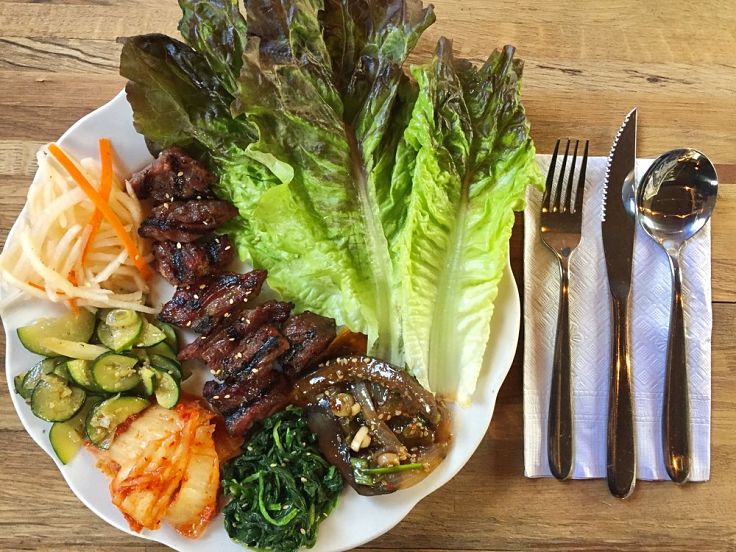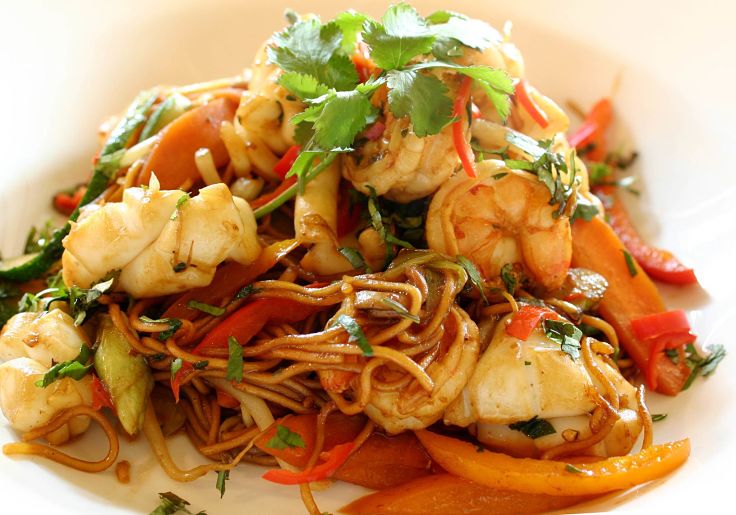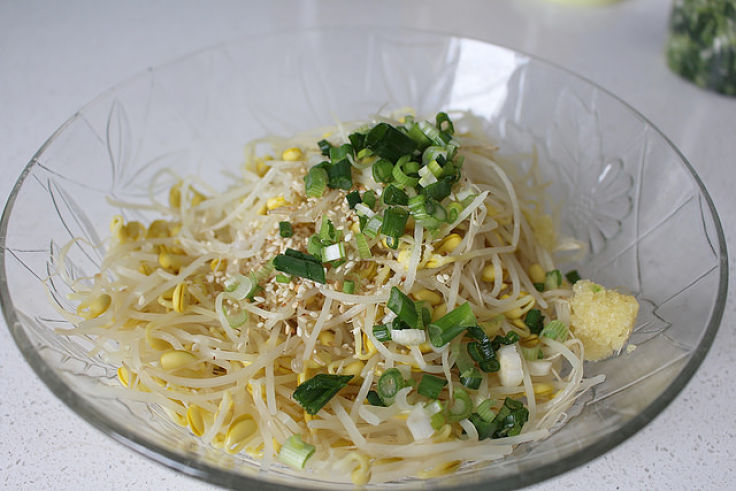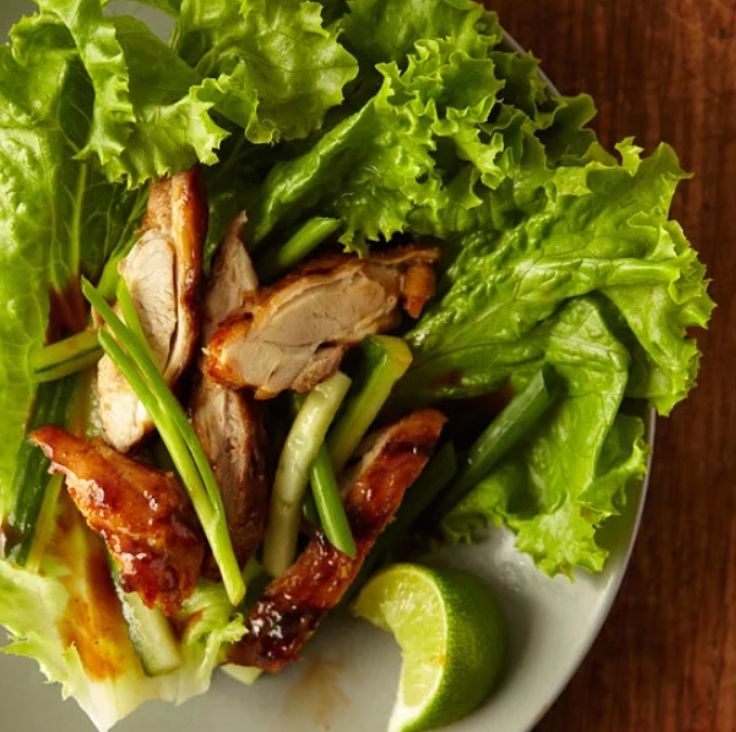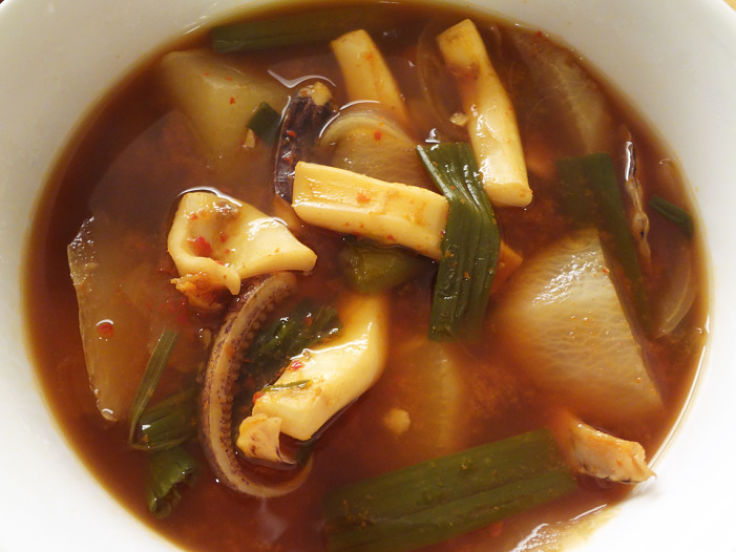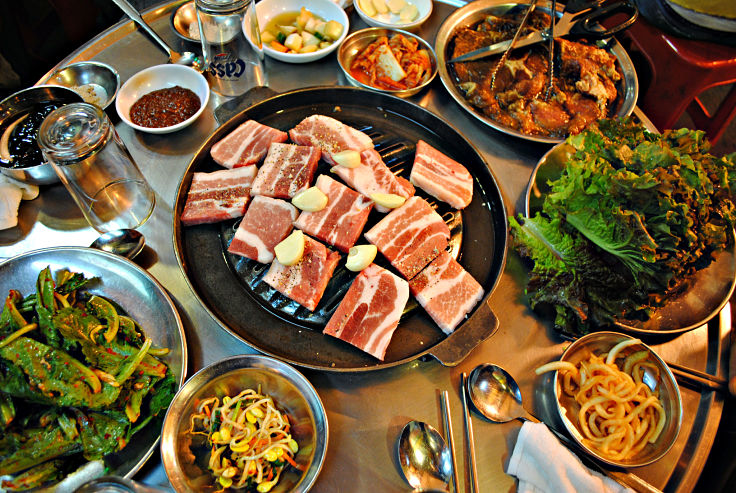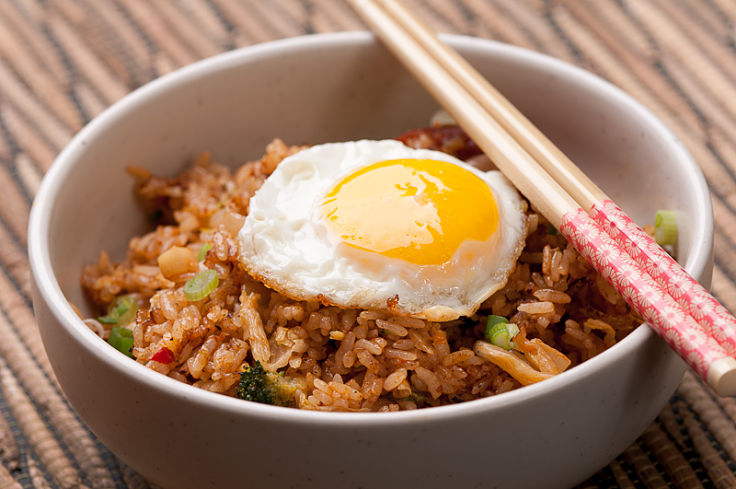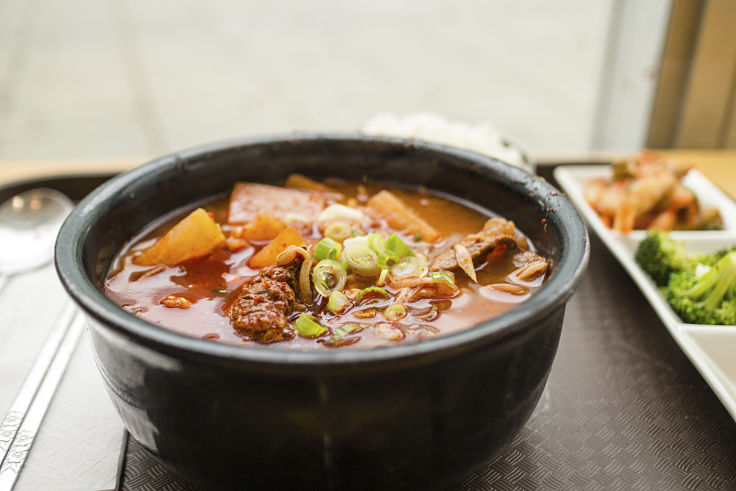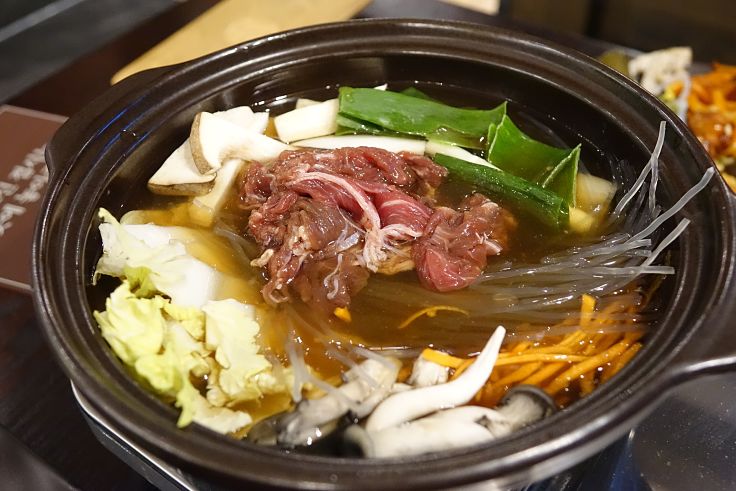Korean Food Calories - Healthy Low Calorie Choices for Eating In or Out
Korean food is a delightful blend of Japanese, Mongolian and Chinese culinary traditions with its own unique style, that is generally very healthy because most dishes contain pickled vegetables and fresh herbs.
Fresh vegetables are not included in some dishes, but most are seasoned with fresh herbs and this adds vitamins and minerals. The emphasis is on fresh whole foods. Seafood is very popular, especially a variety of fin fish, crab, clams, shrimp, oysters and squid and is often cooked on a grill.
Koreans also love to eat beef, pork and chicken, with these meats generally marinated and grilled, and served with rice, rice noodles or buckwheat. The primary flavors and seasonings are garlic, rice vinegar, sesame oil, ginger, soy sauce, and a variety of unique spices made from fermented chilies and soybeans or fermented chilies.
The large variety of dishes can be either salty, bitter, sweet, hot and sour. Most of these ingredients and the large variety of vegetables that are pickled are easy to find, and so Korean dishes can easily be prepared at home.
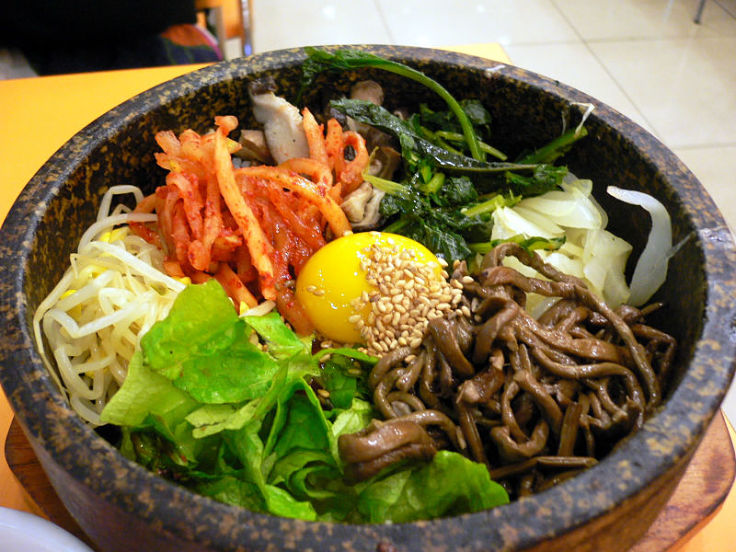
Koreans loved adding pickled vegetables (kimchi) to their dishes. Fresh vegetables and herbs can be included such as cabbage, radishes, turnips, Chinese greens and cucumbers.
These vegetables are also seasoned with coarse salt, garlic, hot chilies, onions, fish, ginger and oyster sauces and then pickled using earthenware pots.
Soups, both hot and cold are also very popular and are usually noodle based and served in stone bowls.
So for healthy low-calorie choices, Korean food is generally a very good choice. Most home and restaurant prepared dishes are nutritious, full of flavor, refreshing and very well balanced. People who love hot spicy food will also love Korean dishes.
A typical Korean meal consists of a bowl of soup, then a stir-fried or grilled main course.
Usually the main course is served with a delightful variety of tiny side dishes called panchan. Up to ten of these dishes can be served containing an intriguing mix of pickles, sauces, preserved fish, vegetables and a variety of condiments and flavors.
Tips for Healthy Eating
Korean food can be dominated by protein, but go easy on the rice and noodles tat accompanies most dishes. Ask for a small serving of carbohydrates and ask for extra vegetables. Plain soups, grilled dishes, stews and barbecues are good choices. Beware of barbecue sauce and some of the other sauces which contain sugar and thickening agents.The sushi served at many Korean restaurants is an excellent good option, especially as an appetizer, instead of the dumplings or scallion pancakes, both of which are high in calories. These delicious hot-and-spicy vegetable nibbles called kimchi are also a good choice to fill you up and balance the meals
Main Types of Dishes
- Bap (Rice) - steamed rice, which may also include other grains.
- Juk (Porridge) - various grains simmered for a long time.
- Guksu (Noodles) - these are made by kneading buckwheat flour or wheat flour and withdrawing the dough to form long coils.
- Mandu (Dumpling soup) - This soup includes dumplings made of thin wheat flour wrappers filled with various ingredients then steamed, or boiled in jangguk (a soy sauce based soup).
- Tteokguk (Sliced rice cake pasta soup) consists of diagonally sliced white rice cakes that are simmered in jangguk.
Guk (Soup) - made of seafood, vegetables or meats boiled in generous amounts of water. Some varieties are tojangguk
(soybean paste soup), malgeun-jangguk (generally clear soy sauce soup), naengguk (chilled soup) and gomguk (rich beef soup).
Jjigae (Stew) - This stew has less water and more ingredients than soups. Varieties include tojang-jjigae (soybean paste jjigae) and
malgeun-jjigae (clear jjigae)
Jeongol (Hot pot) - This began its life as a court food for royalty. It consists of seafood, meat, vegetables and mushrooms
simmered in broth at the table before serving.
Jjim (Steamed dish) - a main dish of various seasoning ingredients that are steamed.
Seon (Steamed or parboiled stuffed vegetables) - Various vegetables such as eggplant, pumpkin, cucumber and
cabbage are stuffed with tofu, beef and mushrooms and then parboiled in broth or steamed.
Jorim (Braised dish) - meat, seafood and vegetables are braised with soy sauce and red pepper paste over low heat
for a long period of time. The dish may have strong seasonings and flavors.
Bokkeum (Various Stir-fried dish) - These dished are stir-fry ones using meats, seafood or vegetables. There are two types of these dishes; the first is stir-fried with soy sauce and sugar in an oiled frying pan, the other is simply stir-fried in a little oil.
Gui (Grilled dish) - These are grilled meats, seafood or vegetables dishes.
Jeok (Pan-fried dish. Brochette) This is a dish of seafood, meats or vegetables that are minced or sliced and then coated with a batter of wheat flour and beaten egg before being pan-fried.
The ingredients are seasoned and skewered before being pan-fried.
Some Dishes Likely to be on the Menu
Pa jon -This is a rice-flour pancake, made with an egg that contains green onions or scallions and small pieces of shrimp, pork or beef cooked on a hot pan.Mandoo guk - This is a beef-based stew served with Korean dumplings (which resemble wontons)
Bulgogi (with alternate spellings of pulgogi or bul go gui) - is the name for the famous Korean barbecue dishes. Thinly sliced beef pieces are covered with fragrant barbecue sauce and cooked at your table over a charcoal grill. There are many versions using different meats such as jae yook gui (pork) or dak bulgogi (chicken), with other choices including fish, shrimp and squid. When the meat is cooked it is dipped in barbecue sauce and served wrapped in a lettuce leaf.
Kal bi tang (or galbi tang) - Is the name for a stew made with marinated rib beef that is consumed with a variety of condiments, pickled vegetables and rice.
Bimibap - Is a casserole (bap or bop means rice) based on rice, and it included pieces of meat and seasoned vegetables and is topped with a fried egg.
Myon (Buckwheat noodle dishes) - There are many of these, ranging from mild to very spicy. Naengmyon, for example is a cold noodle with broth to which is added thin slices of beef, sesame seeds, green onions, shredded cucumbers and radishes. It is served with hot mustard that is stirred into the soup.
Chapchae - Transparent rice noodles dish which includes various stir-fry ingredients such as: mushrooms, green onions, beef and vegetables seasoned with sesame oil.
Cho (Janggwa -: (Seasoned and braised seafood) This is a dish of boiled abalone, sea slugs and mussels with seasoning cooked on low heat. A starch liquid is used to thicken the liquid.
Hoe (Raw meat or fish, Pressed meat or Pressed trotters) - Hoe is a dish of raw meat, fish or vegetables seasoned with vinegar soy sauce, mustard, or vinegar red pepper paste. Often it is blanched in boiling water.
Mareun-chan (Dry side dish) - is a dry side dish made of seasoned and salted meat, vegetables and seafood, that can be enjoyed fried or dried.
Jangajji (Pickled vegetables) - is a side dish of pickled vegetables that include bellflower roots, Korean radish, cucumbers and garlic in red pepper paste, soy sauce and soybean paste.
Jeotggal (Salt-fermented seafood) - This is a side dish of marinated anchovies, shrimp or clams with salt that has been fermented. It is served as a side dish or used as a seasoning.
Sukchae (Parboiled vegetables)
Saengchae (Fresh salad) - This is seasonal freshly made salad from local ingredients. The salad is dressed with vinegar soy sauce, red pepper paste, or mustard. It has a sweet and sour flavor.
Kimchi (Seasoned and fermented vegetables) - This dish is made by marinating Korean radish and cabbage with salt, seasoning it with garlic, green onion, red pepper, ginger and salt-fermented seafood, and fermenting it.
Tteok (Rice cake) - This dessert dish is made by frying, steaming or boiling rice or other grain powder mixed with a little water.
Hangwa (Korean cookies)
Healthy Alternatives
|
Choose
|
Instead of
|
|---|---|
|
Cold tofu or fried tofu pa jon (scallion pancake)
|
Twoenjang guk (fermented soybean paste soup with baby clams)
|
|
Seafood soup
|
Korean dumplings
|
|
Shinsollo (meat, fish, vegetables and tofu simmered in beef broth)
|
Any bap/bop (rice) dish
|
|
Any go gi (barbecue) dish (beef, chicken, pork or fish)
|
Any myon (buckwheat noodle) or chapchai (rice noodle) dish
|
Related Articles
=> Korean Seafood Pajeon Pancakes Recipe with Fresh Local Squid
=> Korean Kimchi Fried Rice Recipes with Delicious Variations
=> Vietnamese Food Calories - Healthy Low Calorie Choices
=> Thai Food Calories - How to Make Healthier Choices
Calories in Korean Foods and Dishes
The table below summarizes the calories in a list of Korean foods and dishes. The serving size and the calorie contents are shown.
|
Food
|
Serving
|
Calories
|
|---|---|---|
|
Baechu Kimchi:Common (napa cabbage) kimchi.
|
60 g
|
11
|
|
Baek Kimchi: Cabbage kimchi without hot pepper.
|
50 g
|
10
|
|
Bean Paste Soup (Dwenjanggigae)
|
1 dish
|
139
|
|
Beef bulgogi
|
112 g (4 oz)
|
290
|
|
Beef Soup
|
1 soup
|
328
|
|
Bi Bim Bap
|
586 g
|
643
|
|
Bibimbap
|
1 Cup
|
430
|
|
Budae Jigae, Army Base Soup
|
1 bowl
|
639
|
|
Chicken Broth With Ginseng
|
1000 g
|
677
|
|
Corn Chips (166g Pack)
|
30 g
|
165
|
|
Doenjang Soup With Spinach
|
1 bowl
|
165
|
|
Dolsot Bibimbap
|
1 Cup
|
560
|
|
Dongchimi: Chopped radish kimchi in served in water.
|
100 g
|
11
|
|
Dwaeji Galbi Jjim: Grilled pork marinated in galbi sauce.
|
133.5 g
|
187
|
|
Fried Zucchini W/ Egg (Hobakjeun)
|
1 dish
|
88
|
|
Galbi
|
6 oz.
|
375
|
|
Galbi Gu-i: Grilled marinated beef.
|
254 g
|
566
|
|
Galbi Jjim
|
5 oz
|
380
|
|
Ggakdugi: Cubed radish kimchi.
|
50 g
|
16
|
|
Green Pumpkin Stir-Fry
|
1 portion
|
92
|
|
Hotteok - Brown Sugar Stuffed Pancake
|
1 pancake
|
313
|
|
Japache
|
1 1/2 Cup
|
370
|
|
Jui Po
|
1 piece
|
120
|
|
Kimbap
|
1 roll
|
485
|
|
Kimbap: Rice rolls with vegetables and ham.
|
300 g
|
484
|
|
Kimchee Chigae (Jigae) With Tofu
|
2 cups
|
186
|
|
Kimchi
|
94.5 g
|
110
|
|
Korean Beef Bowl
|
1 container
|
420
|
|
Korean Short Rib Soup
|
1 cup
|
250
|
|
Korean Soybean Paste (Doenjang, Dwenjang)
|
1 Tbsp
|
50
|
|
Korean Superfood Salad
|
1 box
|
233
|
|
Korean Superfood Salad With Shredded
|
1 box
|
326
|
|
Korean Superfood Salad With Shredded Duck
|
1 box
|
318
|
|
Korean Zarusoba Noodles
|
3.5 oz (100g)
|
270
|
|
Makgeolli: Fermented rice liquor.
|
150 g
|
69
|
|
Mochi Ball With Red Bean Filling
|
1 piece
|
77
|
|
Mujigae Ddeok: Rainbow colored glutinous rice cake
|
100 g
|
234
|
|
Nori/Seaweed
|
10 grams
|
62.5
|
|
Ox Tail Soup (Gori Gomtang)
|
1 bowl (23 oz)
|
520
|
|
Pork Bone Soup - Gamjatang
|
1
|
|
|
Rice Porridge With Beef
|
285 g
|
145
|
|
Rice Porridge With Tuna
|
285 g
|
155
|
|
Rice W/ Namool (Bebimbap)
|
1 serving
|
600
|
|
Rice, White
|
1 bowl
|
313
|
|
Saeng Maekju:Draft beer, domestic (serving size is one 500cc glass).
|
500 g
|
190
|
|
Samgyeopsal Gu-i: Grilled pork (fresh bacon).
|
201.5 g
|
671
|
|
Samgyetang
|
1 large bowl (800 g)
|
1050
|
|
Seasoned Tofu
|
1 dish
|
125
|
|
Sikhye: Sweet rice drink
|
200 g
|
208
|
|
Sizzling Korean-Style Beef (Bbc Good Food)
|
1 serve
|
343
|
|
Soju: Clear rice spirits (serving size is one shotglass).
|
45 g
|
64
|
|
Soon Tofu (Korean Style Extra Soft Tofu)
|
3 oz (85g)
|
45
|
|
Stir-Fried Mushroom
|
1 plate
|
168
|
|
Yakult: Yogurt-derived probiotic drink (serving size is one small bottle).
|
65 g
|
49
|
|
Yeolmu Kimchi: Baby radish (leaf only) kimchi.
|
50 g
|
12
|
|
Yukae Jung (Spicy Korean Beef and Noodle Soup)
|
1048 g
|
233
|
